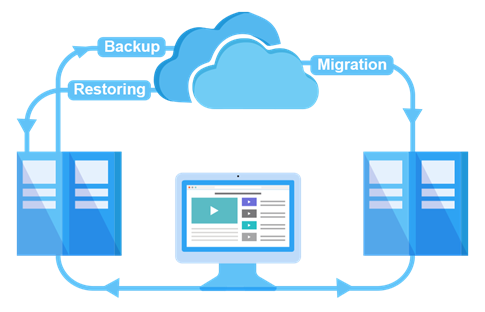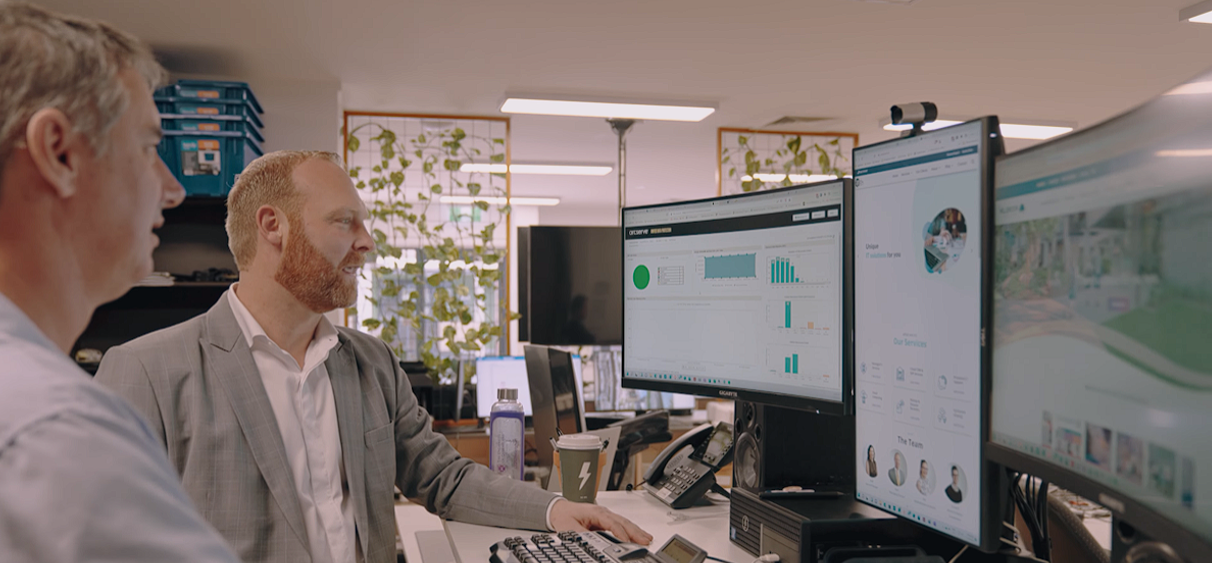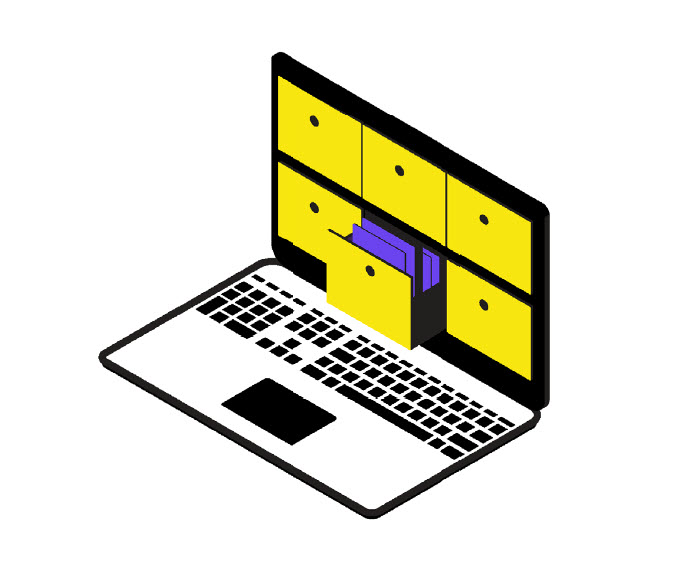Techniques and Technologies of Backup
The types, techniques and technologies of Backup Backup today are diverse and have evolved continuously over a long period of time. It provides organizations and users with the ability to deploy backups under a configurable SLA, as well as to meet Recovery Time Objective (RTO) and Recovery Point Object (RPO) needs. Data also depends on the capabilities of the backup application.
How many types of backups and backups are there?
There are several ways to back up data:
- Full Backup It collects copies of the entire dataset. And it is considered the most reliable backup method. But backing up all that data is time consuming and requires a lot of disk or tape. Most organizations run all Full Backup backups from time to time, for example, only once a week.
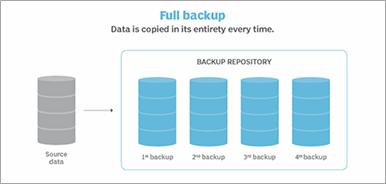
- Incremental Backup Incremental backup is a replacement for Full Backup, backing up only the data that has changed since the last backup. The downside is that restoring all the data will take a long time. Because data from Full Backup must be used in conjunction with all available Incremental backups.
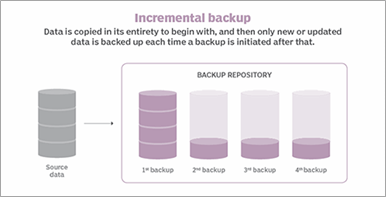
- Differential Backup A differential backup from Full Backup is a copy of the changed data from the last Full Backup full backup. This allows for a faster complete recovery by only restoring the most recent Full Backup. and the latest Differential Backup. For example, if you create a Full Backup on Monday, Tuesday’s Differential Backup will be similar to an incremental backup at that point. Wednesday’s Backup will back up any difference that has changed since the Full backup. Monday’s Backup
- The downside is that the differential backup data increases, the difference tends to be greater and negatively affects the duration of your backup. Differential recovery creates files by combining a complete copy of the previous full backup with one or more incremental copies created later.
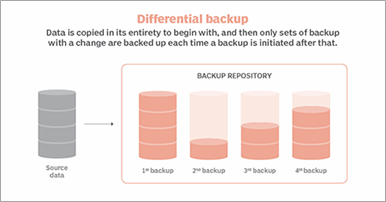
- Synthetic full backup It is a form of differential backup. In synthetic full backup, a full backup is created based on Full Backup and Differential Backup data.
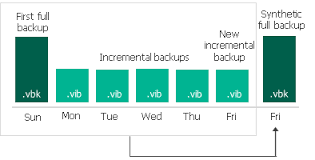
- Incremental-forever backup This type of backup shortens the backup time. At the same time, it enables faster data recovery. backup An incremental-forever backup performs a specific backup that differs from the last incremental backup, and the recovery consolidates the entire data set and is supplemented with an Incremental Backup to obtain the required data.
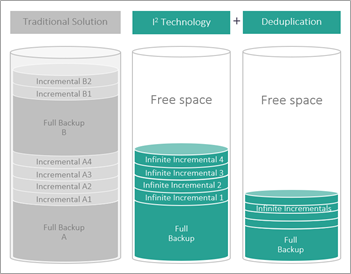
- In addition, incremental backups are also available. Only the changing blocks are known as Infinite Incremental (I2) or Delta Differencing. Typically, all datasets in this backup are stored on the backup server. This makes recovery quick and easy.
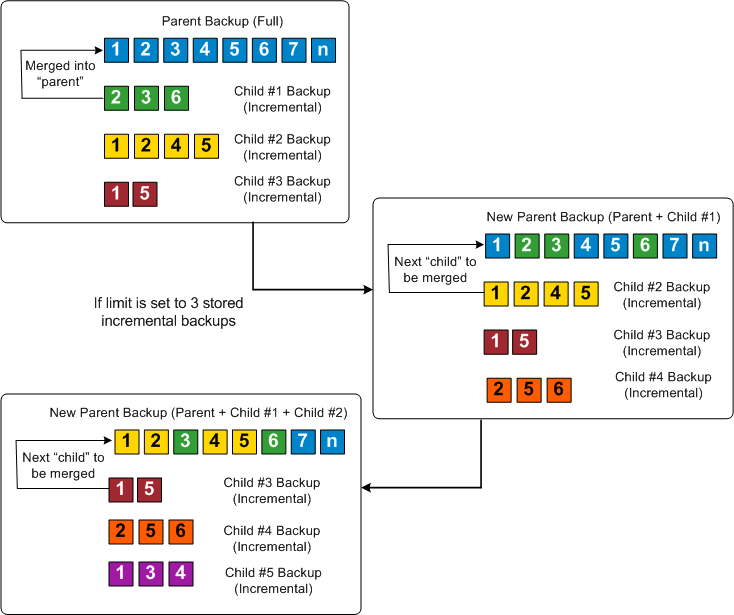
- Reverse-incremental backups This type of backup combines the differences that occur between the two backups. When the first full backup is complete Subsequent incremental backups are merged into the previous backup to create a new Full Backup to keep the latest Full Backup at all times. And with the next incremental backup, a new full backup is obtained and the different data is stored as the previous incremental.
- This backup format has the advantage of getting a new Full Backup set all the time, but the disadvantage is that restoring the previous data from the latest Full Backup will take a long time.
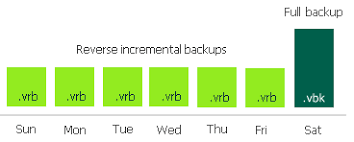
Techniques and technologies for backing up data
- Continuous data protection (CDP) Ongoing protection and backup means technology designed to improve data protection. CDP storage systems are backed up whenever there is any change. CDP systems allow the creation of multiple copies of the data. Many CDP systems have built-in capabilities that replicate data from the primary server to the backup server and/or Tape storage Disk to disk to tape backup is a popular architecture for CDP systems.
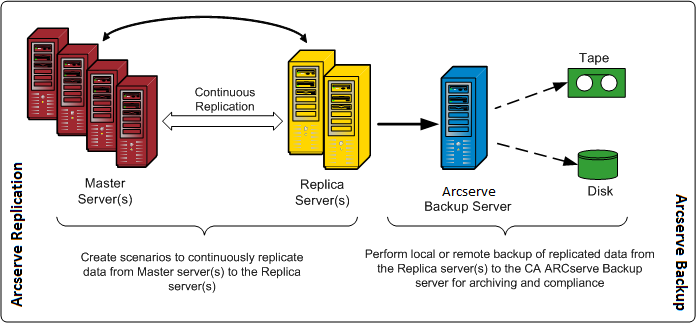
- Near-continuous CDP It uses the Backup Snapshot method by setting a specified time. This is different from a snapshot of a storage system that will back up new data when data is written to storage.
- Data Reduction is to reduce data and reduce your storage space. There are two main methods: data compression. (Compression) and the elimination of duplicate data. These methods can be used alone or in combination. But vendors often combine methods. Reducing the size of data affects backup and recovery times.
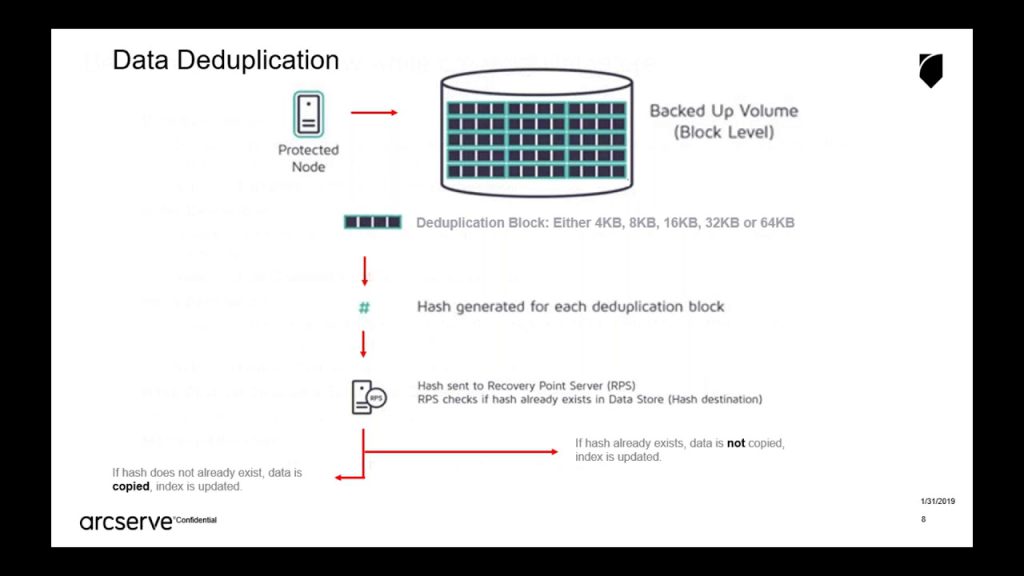
- Disk Cloning It involves copying the contents of your computer’s hard drive. and save it as a file and transfer to various storage media Disk cloning can be used for system preparation. system recovery and returning the system to its original configuration
- Erasure coding (Forward Error Correction) It is developed as an alternative to disk RAID systems, which are primarily used for Object Storage. Data is written to multiple drives using Parity Drives to ensure data redundancy, flexibility and reliability. durable This technology divides data into smaller chunks and encrypts it with bits of data for storage and recovery. These fragmented codes are distributed to different Storage, Nodes, or even regions. Recovering and rebuilding corrupted data with this technique is called Oversampling.
- Flat backup It is a data protection where snapshots are copied and moved to low-cost storage without the need for traditional backup software. The original snapshot stays the same. While flat backup copies are executed if the original is unavailable or unavailable.
- Mirror This is where data files are placed on more than one server computer or stored on different Disk/Storage to ensure that users can still access them in case of problems. In Synchronous Mirroring, data is written to the storage. two sets at the same time Writes from the first storage will not be recognized until confirmation is sent from the other storage. Therefore, the system ensures that the two data sets have identical copies of the data. For asynchronous mirroring, data is written to two repositories at the same time but is recognized when the first storage is complete. without waiting for the second set of data to be stored
- Replication It allows users to choose the number of copies of data they need to run their business. Data Replicate copies data from one location to another. It provides a current and identical copy for the benefit of data recovery.
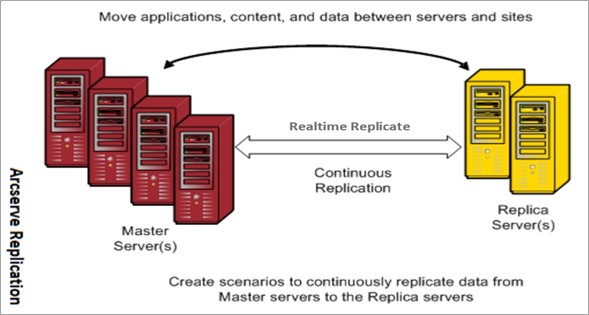
- Recovery-in-place หรือ Instant Recovery This allows users to temporarily run production applications directly from the backed up data. Therefore, the availability of data for recovery is high and can be restored quickly. Retrieving data from a backup server or storage system can enable system recovery in minutes. But restoring from a mounted backed up image will degrade performance. This is because the backup server may not be the size or performance to support the actual workload.
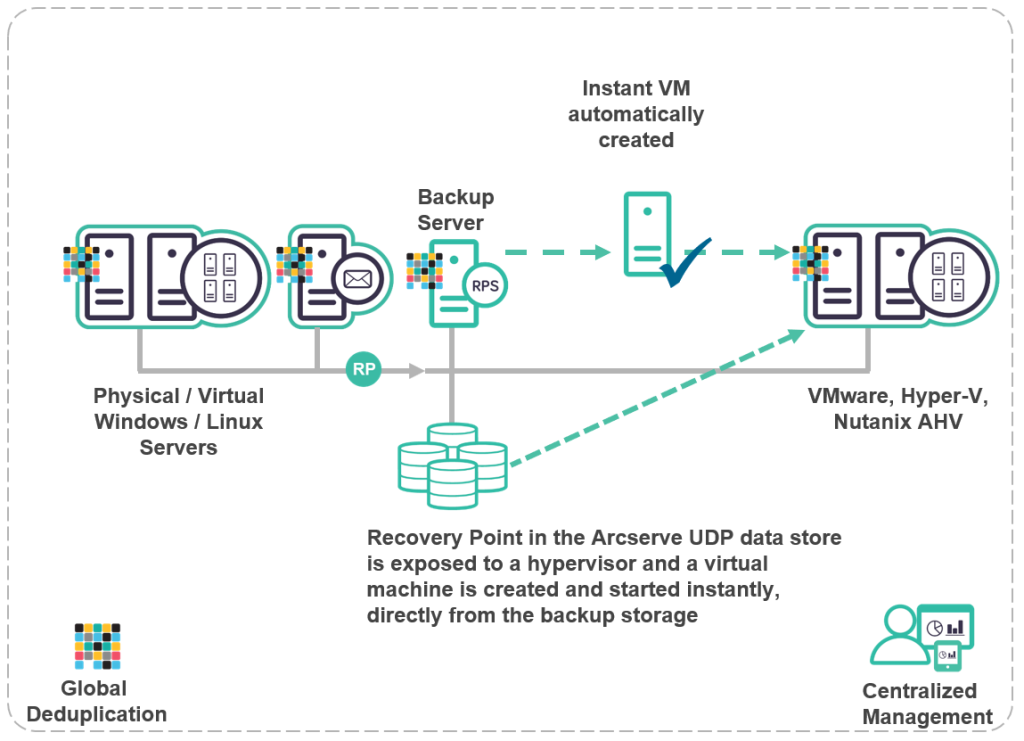
- Storage Snapshot It is the storage of data from a specified period on disk for a database, file, or disk volume that stores a given storage of data. The user can refer to a backup interval to restore data from a selected point in a manner. Point-in-time Recovery Snapshots are not a full backup. As such, Snapshots do not protect against data loss from hardware corruption. Snapshots are generally grouped into three categories: Changed Block, Clones, and CDP.
How to choose the right backup
When deciding what type of backup to use You need to weigh several important considerations.
Organizations often combine different backup methods. according to the needs of the organization By defining a backup strategy under an SLA that applies to that application or system. both in relation to data accessibility and availability Recovery Time Objectives (RTO) and Recovery Point Objectives (RPOs). The choice of backup also depends on the capabilities of the backup application. This should guarantee that all data is backed up and provides replication and recovery while creating an efficient backup process.
